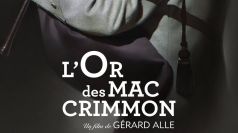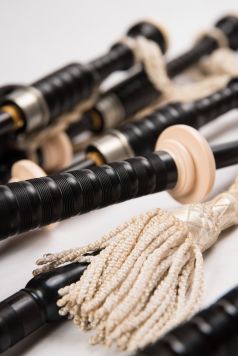Released in the spring of 2019, "L'or des Mac Crimmon" is a documentary that tells the story of a life where Patrick Molard meets the spiritual world of Piobaireachd or Ceòl Mòr music.
Breizh Music met Patrick Molard to talk about it.

Who had the idea of making a documentary DVD about Piobaireachd?
This comes from a meeting with Gérard Alle some decades ago. At the time, he was not yet a novelist. We had conversations about the music of Piobaireachd and my journey as a highland bagpiper. 3 years ago, we took this idea and built this documentary. We recorded at the Grande Boutique in Langonnet during the rehearsals of my album "Ceol Mor - Light and shade" then in Scotland in different places, the Isle of Skye or the Piobaireachd society in Glasgow.
For me, it's a new way of explaining the magic of this music which can seem repetitive or even boring at first. So, I wanted to try to give the keys to understanding so that everyone can then go and listen to them and make their own way.

How did you get passionate about Piobaireachd music?
When I was 13, my dad took me to see a bagad parade and it was a shock. I was immediately moved by the sound of the drones of the bagpipe. I took lessons with Jakez Pincet who had lived in Scotland. He had done a concert in Rennes and ended with an air of Piobaireachd and there I said to myself that that was what I wanted to do.
I then did a faculty of English and Celtic studies in Rennes and I went to Scotland to be an assistant in Aberdeen. I was already playing the bagpipes in a pipe band in Rennes.
I did a few little contests that took place during the highlands games, all over the field. I won one and the foreman was Robert Brown, Queen's Ringer. I asked him if he would give me lessons and he accepted.
Formed by the queen's bell-ringers, you are one of the few in the world to have had a training based on song.
For a year, I was trained in Piobaireachd music by Robert Brown and Robert Nicol. Born in 1905, they were the official ringers of Queen Elisabeth.
I was 19 years old and I was learning with the last bearers of tradition, formed by singing, by oral transmission and by processes which disappeared because of the scores.
They taught me to understand the story of the theme and to sing it. The light and the shadow, the strength of the music and the emotions that go with it.
This is what allowed me many years later to decipher an old manuscript and then play pieces that no longer existed in the traditional repertoire.
But above all, you have to understand that the Piobaireachd which is a music which requires a lot of technicality and virtuosity, is not a mechanical music. It is not a question of playing to win competitions but of playing to tell a story, to make people feel emotions.
One does not go without the other.
Is it also true for other music such as Breton music?
Yes, it's true. Many traditional Breton, Irish or Eastern European musicians are technically brilliant and very talented, But they must not forget to tell a story, to bring to life feelings, emotions such as fear, joy, anger or jealousy. This is really where the music is expressed.

Without telling the whole documentary, can you define Piobaireachd music in a few words?
The Piobaireachd is not traditional music as we usually hear it, for example the song of a peasant who recounts his misfortunes with his beloved.
It was the music of the chieftains that spoke to everyone. After the defeat of the Highlanders at the Battle of Culloden in 1746, the English repression was very harsh. The clans were wiped out, the bagpipes were banned and the Piobaireachd music disappeared. And curiously it is the Highland Society of London, made up of Scottish gentlemen living in London who saved this music. This music would die in the 19th century.
Most of the compositions are signed by Mc Crimmon. It takes some training to play and to compose. It is said that the chieftains sent the bell ringers for 7 years to the Isle of Skye to absorb the secrets and techniques of composition. 7 is the mythical number ...
Why "Mac Crimmon Gold"?
The Mac Crimmon were the particular ringers of the Mac Leod clan from the Isle of Skye at Dunvegan Castle. It was a legendary family, full of myths, Some think they came from Cremona in Italy, others from Vikings.
Before the Mac Crimons, there was nothing. It is believed that they would have invented the third drone of the bagpipe, the largest.
We think that this music would come from the harp, because there was a bard, a harpist and a piper.
It is believed that the piper would have supplanted the playing of the harp. We find the same terms, the same movements by adapting to the pibroc'h but it took centuries.
What return has the documentary had in Brittany and Scotland?
In Brittany, the documentary was shown in around twenty cities, large and small.
The audience was made up of curious people with the desire to discover or better understand this music. We had a lot of questions and discussions each time.
In Scotland, we did 7 screenings and the reception was very good. At the Piobaireachd Society in Glasgow, at the end of the screening, there was great silence. Then standing ovation and these few words "thank you so much!" ".
More about this :
"The Gold of Mac Crimmon": https://www.titaprod.com/l-or-des-mac-crimmon
To listen :
"Ceol Mor - Light and shade": Ed Innacor